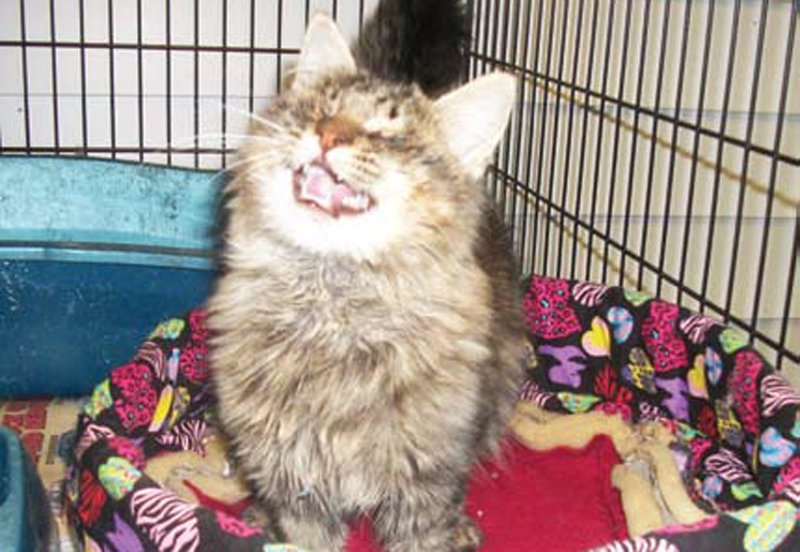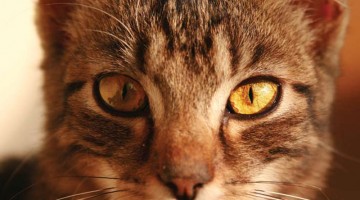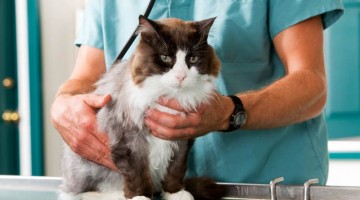These cats may be sightless, but they enjoy happy active lives at this loving sanctuary just for blind felines.
The idea of a sightless cat evokes pity in many people. But Alana Miller doesn’t see it that way. “They don’t know they’re blind,” she says. “All they know is that they’re cats!” Alana firmly believes blind cats can have the same quality of life as their sighted counterparts if they are treated normally and given a chance.
Alana lives that belief every day, as she shares her home with more than 40 sightless felines. Her non-profit organization, Blind Cat Rescue and Sanctuary near Raleigh, North Carolina (www.blindcatrescue.com), provides lifetime care for its residents.
“Blind cats do everything other cats do, and we have plenty of videos on YouTube to show it,” Alana says. “They play, use scratching posts, climb cat trees and do just about every other normal type of feline behavior. They know where the litter box is and how to use it. They can even chase a ball or toy and bat a fly out of the air. They develop an amazing sense of hearing.”
“They are happy and safe here, and I don’t want to put them at risk again.”
Alana began rescuing blind cats in 2005, when she adopted a sightless kitten while working at a shelter. At the time, she took in another blind cat…and then a third. By the time number four came along, she decided to become an official rescuer. “Insanity was my inspiration!” she jokes.
Some of the cats are sightless from birth, but most of Alana’s rescues lost their vision later in life. Untreated eye infections are one of the most common reasons for vision loss, but there are many others. Abigail and Oreo, for example, were neglected in two separate cases of animal hoarding, while an energetic kitty named Max was brought to animal control because oxygen deprivation during surgery blinded him and caused neurological problems. Other cats, like Audrey, were simply dropped off at shelters when their former families no longer found them convenient.
Many of the cats at Alana’s sanctuary came from out of state. Ray and Sylvester traveled all the way from Kuwait when a US contractor who was working there found them and flew them back with her. Every one of Blind
Cat Sanctuary’s residents has a photo and personal story posted on the rescue’s website.
Alana says her property is a lifetime sanctuary for all the cats. They have a forever home in a 1,600-square-foot facility that offers a spacious cage-free environment. “So many come from abusive or neglectful situations,” she explains. “They are happy and safe here, and I don’t want to put them at risk again. I do adopt them out occasionally, but the people must convince me they are beyond fabulous and that they will take care of the cat’s best interests.”
“People aren’t exactly standing in line to adopt blind cats,” Alana adds. Many shelters label sightless felines as unadoptable and automatically euthanize them. Alana says that’s a pity because they are no more challenging than any other cat. Once they learn where everything is in a home, they navigate remarkably well.
“You don’t have to bubble wrap your house,” she explains. “The cat will spend a few days walking around, mapping everything out and memorizing every inch. He’ll run into things, but only once. Pretty soon he’ll be jumping up on the furniture and acting like any other cat.”
“You don’t have to bubble wrap your house.”
Alana’s rescue facility is currently at capacity. But she’s working on a building fund to construct a new facility that will serve more blind cats and also provide a permanent home for FeLV and FIV positive felines. “There is even less help available for FeLV and FIV positive cats than for blind ones,” she notes. In addition to her hands-on work, Alana helps find homes for sightless cats through Facebook postings and other networking.
Blind Cat Rescue and Sanctuary depends completely on donations. One of Alana’s biggest challenges is getting volunteers to assist with cat care. She juggles the sanctuary with a full time job, and the shelter is in a very rural area, with other homes 25 to 30 miles away. Her daughter, Stephanie, helps care for the brood, but she hopes to develop a volunteer network to assist with cat care, mailings, membership drives and other day-to-day needs.
Alana also seeks sponsors to help finance the needs of individual cats for $30 a month. “We have sponsors from all over,” she explains. “They get photos and updates about ‘their’ cats. They’re always welcome to come and visit too. We’ve had people come from California and New York to meet their sponsored cats.”
It may seem amazing to see Blind Cat Rescue’s feline residents playing with toys, climbing and jumping, but to them it’s just another normal day. They don’t know they’re handicapped, and they’ll never find out as long as they’re enjoying Alana’s loving care.







No Comment